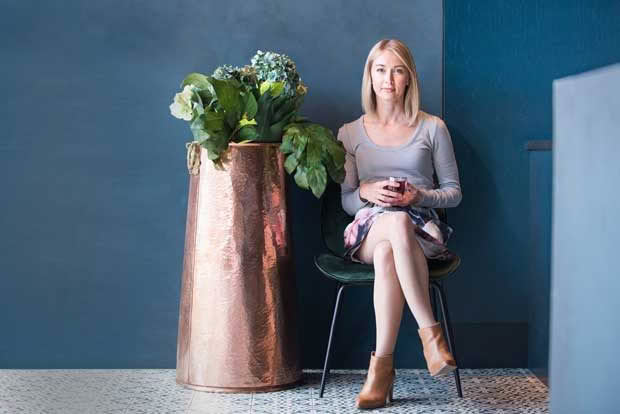5 steps to the perfect cup of tea

Mindfulness is a key ingredient in the preparation of your daily cuppa, explains Tea Master Anna Kydd.
Words: Nicole Barratt
Open any cupboard in Anna Kydd’s home and you’ll find tea – 92 different kinds to be exact. Fragrant tins of Chinese black tea, green tea and dark oolong line the shelves. The creator of Auckland-based subscription service The Tea Curator has had a fair amount of practise in achieving the perfect cup.
Tea is one of Anna’s anchors during her day. “There’s something meditative about smelling, brewing and sipping a cup of tea.”
The beverage seems to have been ever-present in her life; during her childhood, a steaming teapot hugged by a knitted tea cosy was the centrepiece on her family’s kitchen table. Later while working in London, in corporate communications, she fell in love with the occasion of tea drinking. “It was a chance to take a breath and spend time with people. It felt special.”
Anna became a certified Tea Master in Melbourne in 2015, completing an Australian Tea Masters Association course which included a three-day intensive workshop with subjects such as the history of tea and many tastings followed by 14 weeks of structured online training. “I was pregnant at the time and tasted around 40 teas in my training.” It’s no wonder her daughters (Vienna, 4, and Lola, 1) are avid tea-party fans.
Anna says the art of brewing tea is not complicated. “Follow the three main basics and you can’t go wrong.”
These are:
– Invest in good-quality leaves
– Steep leaves in the correct water temperature
– Steep for the correct amount of time
“A lot of people say, for example, ‘I hate green tea; it’s bitter’, but often it’s because of poor-quality leaves or incorrect brewing. Green tea should be smooth and refreshing.”

ANNA’S FIVE STEPS TO THE PERFECT CUP OF TEA
1. Pure water, pure tea: Brewed tea is 99% water. If the water tastes clean and pure, the tea will taste the same. Freshly drawn, cold-filtered water brings the aromas and flavours of tea to life. (Don’t use water that’s been sitting in the kettle for hours.)
2. Water temperature: The right temperature will help activate the aromatic oils in tea without scorching the leaves. Generally, use 85°C for white, green, yellow and light oolong, 90°C for dark oolong, 95°C for fermented tea (sheng and shu teas, where the leaves have been fermented rather than oxidised) and 100°C for black tea. If the kettle (or electric jug) doesn’t display temperature, leave the lid open for two minutes to cool the water to about 85°C.
3. The perfect teaspoon: A good rule of thumb is one heaped teaspoon of leaves to a standard tea cup (130-150 ml).
4. Timing: Just like water temperature, each tea type suits a different brewing duration. Use a timer to correctly steep the leaves and the tea will never be bitter. For green tea, two minutes; black tea three minutes.
5. Look after the leaves: Leaves will retain their aroma and flavour for between one and three years if stored correctly. Tea should be kept in a dark, airtight canister away from heat, humidity, moisture and strong aromas such as spices and garlic.
Anna says it really doesn’t matter what order milk is added to black tea, but she encourages people to try drinking tea without it. “It’s a different experience when you don’t add milk.”
If people feel brewing loose leaf tea is too much effort, she suggests investing in a ‘smart’ temperature-sensitive kettle (or electric jug) and a quality infuser.
“There is some effort involved but it’s how you achieve the best flavour. We need to remember the process is just as good for us as the tea itself; it’s the act of pausing in your day and being mindful.”
Visit The Tea Curator: theteacurator.co.nz

